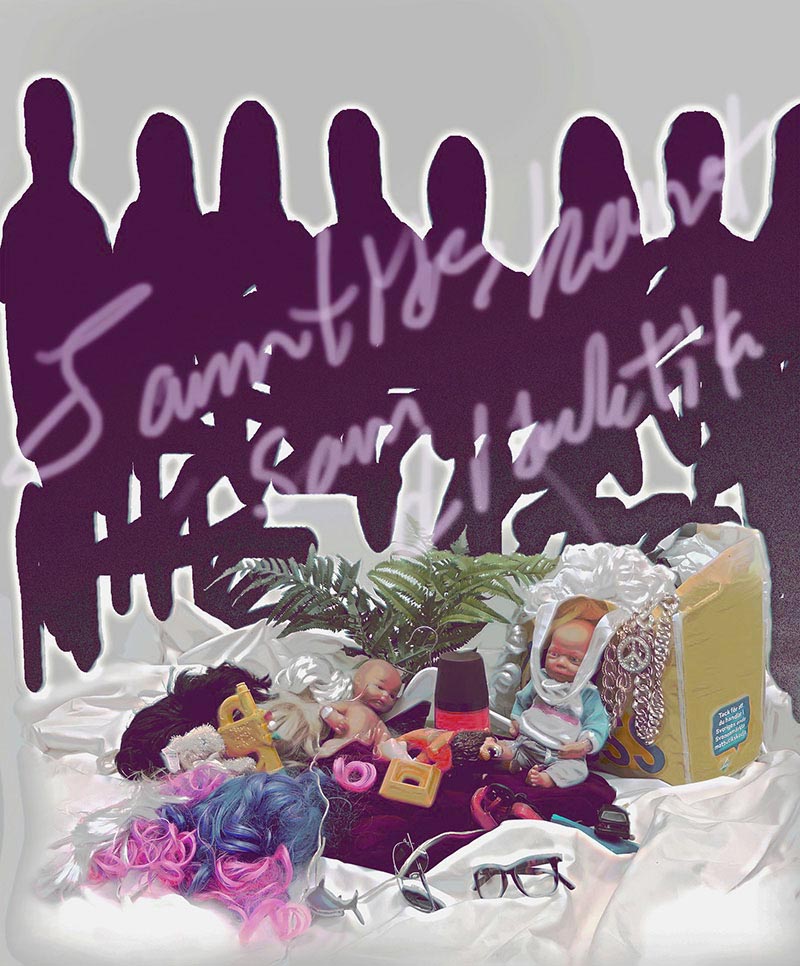In the installation Visual Arts Teaching and Contemporary Art as Didactics, we meet with pupils’ works and opinions on contemporary art, didactics, and thoughts about how visual arts teaching could be developed. These are things the pupils have arrived at in their role as co-researchers, in which they have tested, together with Samuel Ågren, how teaching could be designed based on contemporary art’s strategies and methods. The installation raises questions about the design of Swedish visual arts teaching and is part of Samuel Ågren’s degree project, in which his study addresses issues concerning the purpose of education and who it is there for. But he also asks questions about the gap that exists between instructions and the pupils’ daily lives and realities.
In their role as co-researchers, the pupils have examined teaching based on contemporary art and have, through supervision, themselves decided what they think art education should address and how it should be designed. The pupils came to the conclusion that they wanted teaching that was based on contemporary topics, with an exploratory nature and processes. But also varied visual arts teaching that was rooted in clarity and group work based on the pupils’ interests and everyday lives. The teaching aims to offer expert knowledge and facts, along with something that they themselves do not do or knowledge they cannot themselves assimilate in their free time. The pupils thus learn things that are important and that they will benefit from in their future.
The study was conducted over a number of lessons in the form of workshops, but is also part of a larger research study in which Samuel Ågren investigates alternative ways of presenting research reports. This is done in the form of student essays for IBIS, through the Research Computer Science for Scholarly Articles platform.
Samuel Ågren’s degree project aims to examine and enable teaching that both includes and highlights all people’s different needs. Something that the pupils believe is made possible through teaching based on contemporary art. Another essay presentation format is studied concurrently, with the aim of creating a more inclusive essay that takes into account and utilises the different ways students work and function, as well as linguistic skills and components that are otherwise ignored and eliminated in traditional essays.
‘I hope and believe in the potential of the multimodal report as a tool and a presentation form that includes different linguistic practitioners and perspectives. Where knowledge and understanding are at the centre of creation in order to build a society through people’s individual and distinctive characteristics and different ways of functioning to create a collective, and where everyone is welcome to contribute with their individual strengths’.*
Samuel Ågren is an artist trained and educated in both classical and contemporary methods. He is also a technologist, animator and art and media educator, and has worked most of his life with art education and outreach. His works have an eclectic quality and commonly addresses issues of identity, language, communication, understanding and creation. They are often characterised by different linguistic practices and mediums presented in performative and exploratory events in order to generate new knowledge through interactive elements in which the participants play an active role.
*Samuel Ågren.


